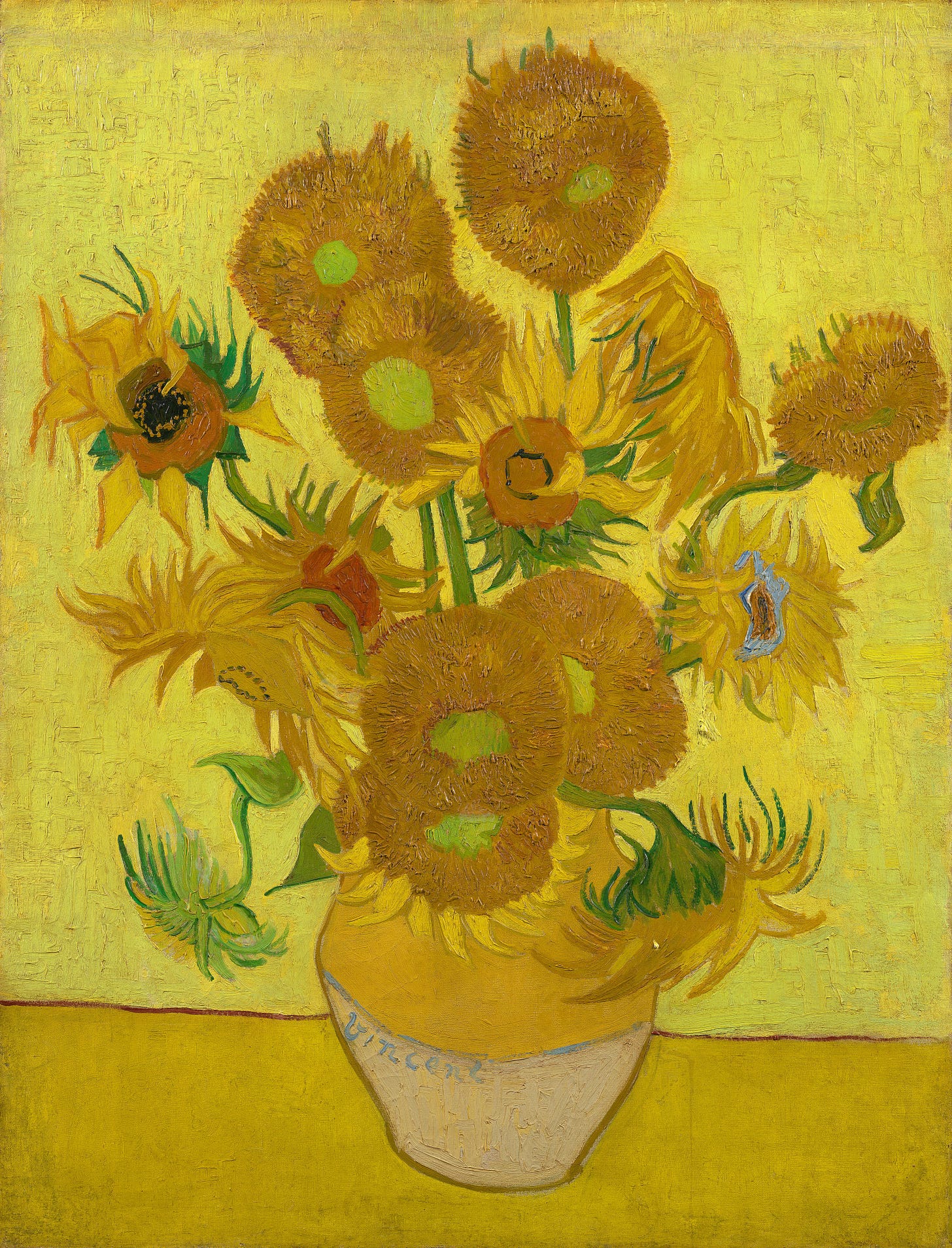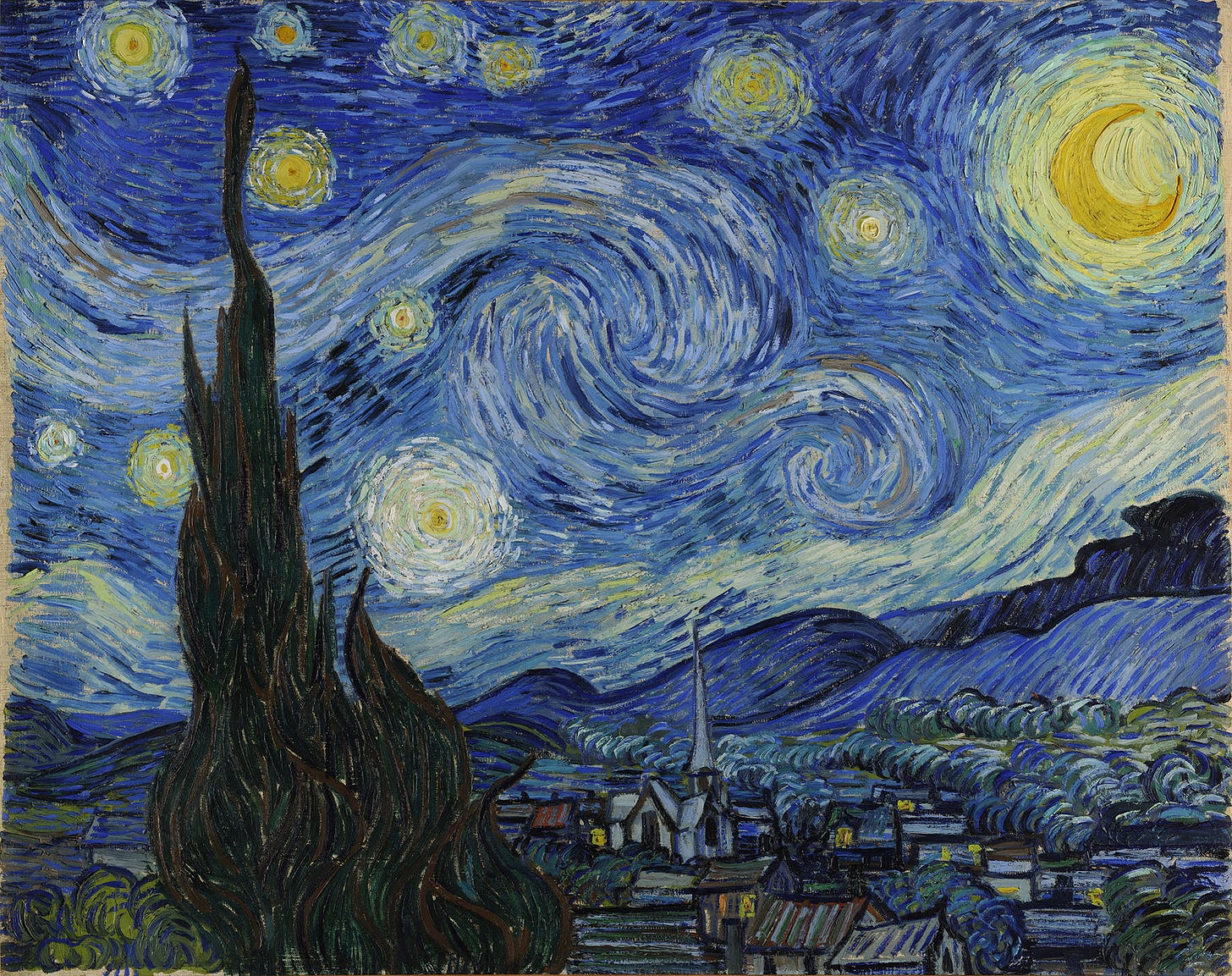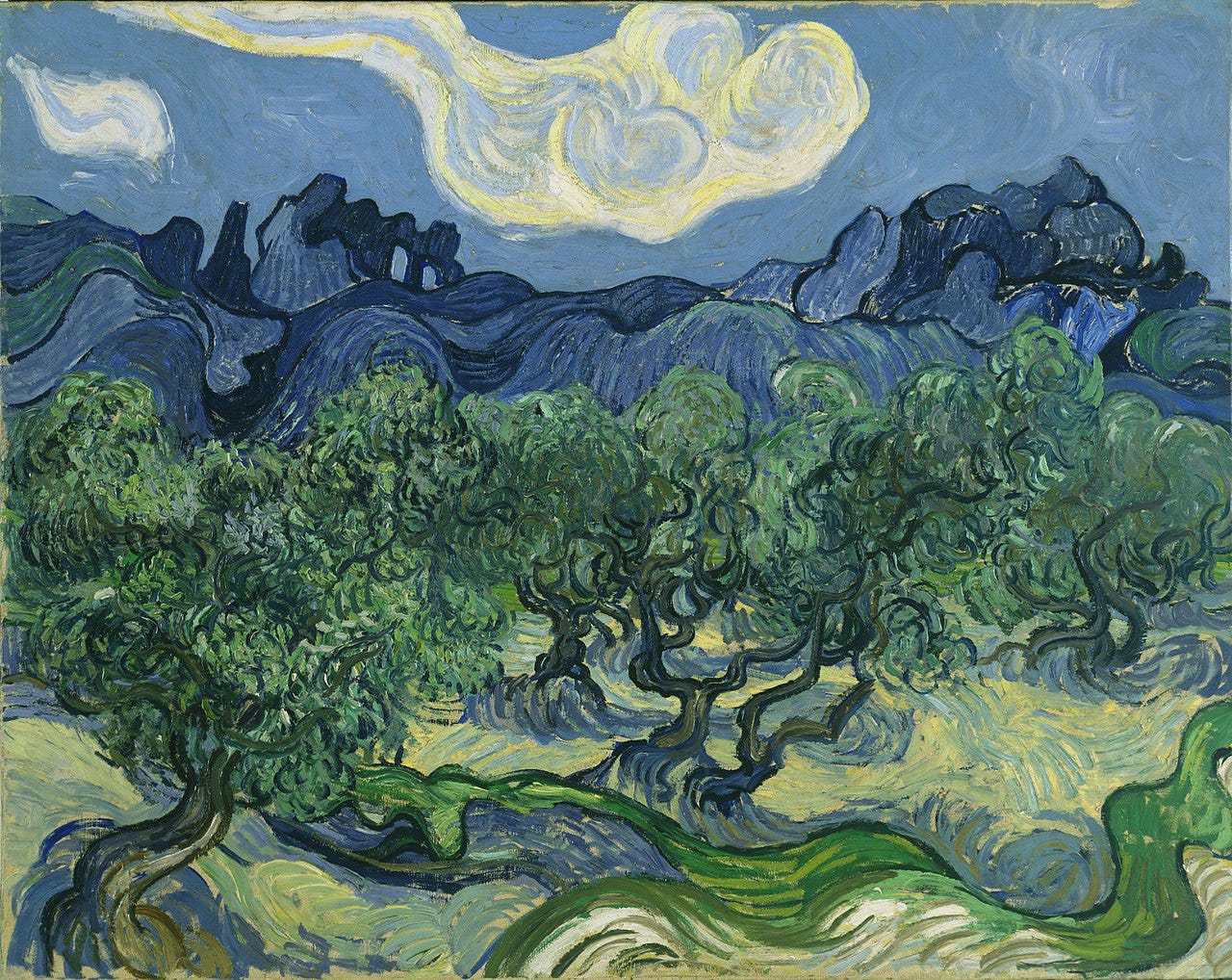Patience or Speed: Are You an Olive Tree or a Sunflower?
Resilience, History, Creative Output, Van Gogh
In the small Cretan town of Ano Vouves, there is an olive tree that is 2,000 years old, and some believe it may be up to 4,000.
Twisted, gnarly, spinning in on itself, it still produces fruit despite its age. These old trees sprinkle the Mediterranean and Levant region—modern-day Israel, Palestine, Lebanon, Syria, and Jordan. They have watched empires rise and fall, survived droughts, been burned, and even cut down.
What makes them so resilient? How did they survive when so many other plants would never have managed?
It begins with slow growth—three to five years before the first fruit appears, up to ten before full bearing. Full maturity can take several decades. This is a time of structural growth, unseen and deliberate. Patience is required. No meaningful fruit will be provided until roots have settled and a foundation has been built.

During their slow growth, they drive their roots into the ground, creating a sturdy root system that will help them regrow should the structure above ground be damaged. This is why they can survive fire: they have built a stable, deep, and strong foundation.
These trees do not hurry. They do not concern themselves with yield at the expense of structure.
As they grow slowly, they must also contend with droughts and rocky, nutrient-poor soils. They have adapted to withstand and thrive in Mediterranean climates. Closing their stomata during extreme heat reduces water loss; they are able to survive arid conditions.
It is no wonder that in Greek mythology, the olive tree symbolized wisdom and prosperity—a gift from Athena to the city of Athens. It was a tree that not only survived difficulty, but also provided food, oil, and wood.
It became a symbol of resilience, and in Palestinian culture, a symbol of steadfastness—an ability to persevere through hardship.
Not everything that grows must grow quickly. Not everything that lasts must be seen.
Not all growth follows this shape, though.
If the olive tree is the architecture of patience, the sunflower is the anthem of immediacy.
Sunflowers complete their entire life cycle in a single season; there is no time given to deep roots. Towering blooms appear in only a few months, laden with seeds that bow over feeble stalks. One storm can knock them over from their shallow grip on the earth. They demand full sunlight and produce dramatic flower heads.

The sunflower follows the sun across the sky, always facing toward the light, basking in its radiance until it matures—then locks into a direction. Its beauty is undeniable, but brief. Fragile. Its task is to produce—and once it does, it withers.
Olive trees are persistent, surviving disasters, drought, and the axe. Even their fruit needs to be processed—complex, but enduring. Through their depth, they continue to produce fruit for hundreds, and in some cases, thousands of years.
The olive waits. The sunflower races.
Thanks for reading! This year, I’m exploring slow creativity—what it means to work with time instead of against it. If that resonates, consider subscribing for free.
On a personal note: I strive to be an olive tree-style artist.
I have been the sunflower, and it is exhausting—always looking to the outside world for energy and validation. Both approaches produce art in the end, but while the sunflower is beautiful and full of energy, it is not meant to last. I want to create a life that allows for stamina, longevity, and the ability to make art until the end.
Vincent van Gogh’s Olive Trees: A Daylight Complement to The Starry Night
While searching for paintings to complement this essay, I came across something I didn’t know: Vincent van Gogh painted Olive Trees in a Mountainous Landscape as a daylight counterpart to his iconic The Starry Night. I felt like I had really missed a day in art history class, or outright something while in museums.
In a letter to his brother Theo, van Gogh described the painting as moving beyond "photographic and silly perfection" to achieve intensity through colour and linear rhythms. I love this idea, that perfection is silly.
Both the olive trees and the night sky were intentional exaggerations, inspired by old woodcut styles.


Personal Work
I'm working on the next essay in my series about the sublime, exploring how it manifests in art, photography, and writing. Which made me look back on some of my photos, including this one below. While in Portugal, I was walking along a clifftop path when I looked down and spotted a lone figure gazing out at the ocean.
Perspective: You're both small and part of something vast.
Hey, you made it to the end!
I have a little secret for you. Corey and I have hiking goals that include multi-day treks on the west coast. This means training our legs to handle fatigue. And let me tell you, this essay is being scheduled by one very tired person. We worked out Saturday, then on Sunday tackled a trail we'd been eyeing—a 9km hike with 500m elevation gain near our home. It was stunning. Our plan is to do this loop weekly, weather permitting, to build our hill-climbing stamina. This week we actually covered 12km with nearly 600m elevation because, well, we're us—stopping at viewpoints and taking our time. I'll admit I jogged down at the end, motivated purely by making it to the local ice cream shop before closing. Today my legs are in full recovery mode, and my watch probably thinks I'm barely alive.
My Monday:








Count me in the olive tree category. 🫒